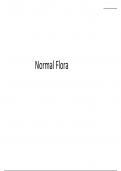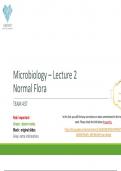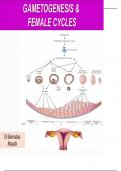exam questions with answer ,class notes
EXCELLENT HOMEWORK HELP AND TUTORING ,ALL KIND OF QUIZ AND EXAMS WITH GUARANTEE OF A
Am an expert on major courses especially; psychology,Nursing, Human resource Management and Mathemtics Assisting students with quality work is my first priority. I ensure scholarly standards in my documents and that's why i'm one of the BEST GOLD RATED TUTORS in STUVIA. I assure a GOOD GRADE if you will use my work.
- 208
- 0
- 1
Community
- Followers
- Following
206 items

TYPES OF RESEARCH. Basic research. • This is the research conducted for the sake of generating and expanding knowledge. • Such a research attempts to explain and describe the status of things. • It does not focus on the application of the new knowl
TYPES OF RESEARCH. Basic research. • This is the research conducted for the sake of generating and expanding knowledge. • Such a research attempts to explain and describe the status of things. • It does not focus on the application of the new knowledge to a specific problem or situation. • However knowledge gained can be used to refine existing theories Applied research. • Thais is the research conducted so that knowledge obtained can be used to solve a specifi...
- Class notes
- • 17 pages •
TYPES OF RESEARCH. Basic research. • This is the research conducted for the sake of generating and expanding knowledge. • Such a research attempts to explain and describe the status of things. • It does not focus on the application of the new knowledge to a specific problem or situation. • However knowledge gained can be used to refine existing theories Applied research. • Thais is the research conducted so that knowledge obtained can be used to solve a specifi...

Normal Flora
Normal Flora NORMAL FLORA: INTRODUCTION • Normal flora is the term used to describe the various bacteria and fungi that are permanent residents of certain body sites, especially the skin, oropharynx, colon, and vagina. The viruses and parasites, which are the two other major groups of microorganisms, are usually not considered members of the normal flora, although they can be present in asymptomatic individuals. The members of the normal flora vary in both number and kind fr...
- Class notes
- • 13 pages •
Normal Flora NORMAL FLORA: INTRODUCTION • Normal flora is the term used to describe the various bacteria and fungi that are permanent residents of certain body sites, especially the skin, oropharynx, colon, and vagina. The viruses and parasites, which are the two other major groups of microorganisms, are usually not considered members of the normal flora, although they can be present in asymptomatic individuals. The members of the normal flora vary in both number and kind fr...

THE FEMALE PELVIS
THE FEMALE PELVIS Functions 1. 2. 3. 4. Allows movement-walking and running Permits one to sit and kneel, supports spinal column Adapted for childbearing. Forms a bony passage through which fetus passes Contains and protects reproductive organs. NB: Normal female pelvis should give no difficulties in childbirth provided fetus is of normal size PELVIS Bony pelvis os Ilium 髂骨 os coccyx 尾骨 os ischium os sacrum os pubis PELVIC BONE. They are ...
- Class notes
- • 76 pages •
THE FEMALE PELVIS Functions 1. 2. 3. 4. Allows movement-walking and running Permits one to sit and kneel, supports spinal column Adapted for childbearing. Forms a bony passage through which fetus passes Contains and protects reproductive organs. NB: Normal female pelvis should give no difficulties in childbirth provided fetus is of normal size PELVIS Bony pelvis os Ilium 髂骨 os coccyx 尾骨 os ischium os sacrum os pubis PELVIC BONE. They are ...

The Nervous System
The Nervous System The Nervous system is the master controlling and communicating system of the body. The Nervous system controls and coordinates all essential functions of the human body. Functions of Nervous System Sensory Function: Nervous system uses its millions of sensory receptors to monitor changes occurring both inside and outside the body. Those changes are called stimuli and gathered information is called sensory input. Integrative Function: The ...
- Class notes
- • 33 pages •
The Nervous System The Nervous system is the master controlling and communicating system of the body. The Nervous system controls and coordinates all essential functions of the human body. Functions of Nervous System Sensory Function: Nervous system uses its millions of sensory receptors to monitor changes occurring both inside and outside the body. Those changes are called stimuli and gathered information is called sensory input. Integrative Function: The ...

SKILLS LABORATORY METHODOLOGY
GENERAL EXAMINATION STEPS / SCHEMA: I. General Observation clinical symptoms II.General examination clinical signs III.General examination vital signs 2 . Systemic examination: I. Cardivascular system (CVS) examination II. Respiratory syatem (RS) examination III. Gastrointestinal system (GIT) examination IV.Genito-urinary (GUT) V. Centra nervous system (CNS) examination VI.Etc---- Remember… If A FARMER IS WITHOUT A JEMBE, IS A NO A FARMER , BUT A TOU...
- Class notes
- • 518 pages •
GENERAL EXAMINATION STEPS / SCHEMA: I. General Observation clinical symptoms II.General examination clinical signs III.General examination vital signs 2 . Systemic examination: I. Cardivascular system (CVS) examination II. Respiratory syatem (RS) examination III. Gastrointestinal system (GIT) examination IV.Genito-urinary (GUT) V. Centra nervous system (CNS) examination VI.Etc---- Remember… If A FARMER IS WITHOUT A JEMBE, IS A NO A FARMER , BUT A TOU...

Bacterial Anatomy Introduction
- Class notes
- • 49 pages •

Microbiology – Lecture 2 Normal Flora
Objectives 1. 2. 3. Define the terms: Normal Flora, Resident flora, Transient flora and carrier state Know the origin of normal flora. Know the importance of normal flora with examples, including importance as: Source of opportunistic infection., Immunostimulation, Nutrition: Vitamins production, Production of Carcinogens, Protection against external invaders. 4. 5. Know areas of the body with normal flora (GIT, Urogenital tract, and skin) and most common types of organis...
- Class notes
- • 15 pages •
Objectives 1. 2. 3. Define the terms: Normal Flora, Resident flora, Transient flora and carrier state Know the origin of normal flora. Know the importance of normal flora with examples, including importance as: Source of opportunistic infection., Immunostimulation, Nutrition: Vitamins production, Production of Carcinogens, Protection against external invaders. 4. 5. Know areas of the body with normal flora (GIT, Urogenital tract, and skin) and most common types of organis...

gametogenesis and female cycles
OBJECTIVES By the end of the lecture, you should be able to: Describe the female cycles ( Uterine ). Define gametogenesis. Differentiate the types of Ovarian & Describe the process of gametogenesis. spermatogenesis. Describe the process of oogenesis. Female Reproductive Cycles • Startat puberty. • Normally continues until the menopause. • Reproductive cycles depend upon activities & coordination of: 1. Hypoth...
- Class notes
- • 31 pages •
OBJECTIVES By the end of the lecture, you should be able to: Describe the female cycles ( Uterine ). Define gametogenesis. Differentiate the types of Ovarian & Describe the process of gametogenesis. spermatogenesis. Describe the process of oogenesis. Female Reproductive Cycles • Startat puberty. • Normally continues until the menopause. • Reproductive cycles depend upon activities & coordination of: 1. Hypoth...

GENERAL APPEARANCE Clinical Methods General Appearance • Observe any signs of acute or chronic distress as evidenced by skin color, respiration, hydration, mental status, cry and social interaction. • Interpret the general appearance of the child i
GENERAL APPEARANCE Clinical Methods General Appearance • Observe any signs of acute or chronic distress as evidenced by skin color, respiration, hydration, mental status, cry and social interaction. • Interpret the general appearance of the child including size, morphologic features, development, behaviors and interaction of the child with the parent and examiner. Cyanosis • Cyanosis is a bluish or purplish tinge to the skin and mucous membranes Central Cyanosis ...
- Class notes
- • 63 pages •
GENERAL APPEARANCE Clinical Methods General Appearance • Observe any signs of acute or chronic distress as evidenced by skin color, respiration, hydration, mental status, cry and social interaction. • Interpret the general appearance of the child including size, morphologic features, development, behaviors and interaction of the child with the parent and examiner. Cyanosis • Cyanosis is a bluish or purplish tinge to the skin and mucous membranes Central Cyanosis ...

Outline Fertilization Gametes Germ Cells Meiosis Male Reproductive Tract Spermatogenesis Female Reproductive Tract Oogenesis Menstrual Cycle Hormones Fertilization Gametes – Oocyte, Sperm Acrosomal reaction Cell Fusion Cortical reaction Com
Outline Fertilization Gametes Germ Cells Meiosis Male Reproductive Tract Spermatogenesis Female Reproductive Tract Oogenesis Menstrual Cycle Hormones Fertilization Gametes – Oocyte, Sperm Acrosomal reaction Cell Fusion Cortical reaction Completion of Meiosis – 2nd polar body released Pronuclear fusion Zygote = fertilized egg Oocyte Corona radiata, follicle cells Zona pellucida, acellular– 3 primary glycoproteins (ZP1, 2, 3) Cortical Granules – ve...
- Class notes
- • 48 pages •
Outline Fertilization Gametes Germ Cells Meiosis Male Reproductive Tract Spermatogenesis Female Reproductive Tract Oogenesis Menstrual Cycle Hormones Fertilization Gametes – Oocyte, Sperm Acrosomal reaction Cell Fusion Cortical reaction Completion of Meiosis – 2nd polar body released Pronuclear fusion Zygote = fertilized egg Oocyte Corona radiata, follicle cells Zona pellucida, acellular– 3 primary glycoproteins (ZP1, 2, 3) Cortical Granules – ve...
